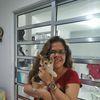Check out what is new in Dairy Cattle
Find the best technical articles, forums, and videos on Dairy Cattle at Engormix. Enter now and interact with the world's largest agricultural social network.
...
Comments : 0
Recommendations: 0
...
Comments : 2
Recommendations: 1


Effects of supplementation with ruminally-protected choline on performance of cows
Suggested link
...
Comments : 2
Recommendations: 0
Adult lactating cows receive more attention when it comes to the negative effects of heat stress, as compared to heifers. This is because lactating cows need to dissipate more heat, running out of milk production and feed consumption and digestion to support it. The losses, caused by exposing adult cows to heat stress conditions include drop in milk production and composition, fertility, health and cow's performance in the subsequent lactation, when exposed to heat stress conditions in...
Comments : 0
Recommendations: 3
.jpg&w=3840&q=75)

AMINODat® 6.0 The most extensive web-based database for animal nutritionists
Suggested link
Introduction Although several species of parasites are harbored in the gastro intestinal tract of animals only few species are clinically and economically important. Clinically important parasites of farm animals prevalent in tropical conditions like Chitwan are Paramphistomum Spp., Fasciola Spp., Toxocara Spp., Monoeiza Spp., Ascaris Spp., Taenia Spp., Haemonchus Spp. and other different nematodes species. The major problem associated with Gastro intestinal parasitic...
Comments : 0
Recommendations: 1
1 Introduction Milk is one of the foods with a crucial nutritional composition for human health. Among the components of milk, fat has been associated with human diseases for years due to its high saturated fatty acid content (Palmquist, 2010). About 70% of the fatty acids in milk triacylglycerols are saturated, 25% are monounsaturated fatty acids (MUFA), and 5% are polyunsaturated fatty acids (PUFA) (Lopes et al., 2016; Abd El-Salam & El-Shibiny, 2020). Studies have shown...
Comments : 0
Recommendations: 1
1. Introduction The use of tannin in ruminant nutrition is increasing, mainly due to its diverse positive effects in several aspects concerning physiology, metabolism, and animal performance. However, research results are quite controversial regarding the concentrations and sources used, which reinforces the need for further studies to elucidate these still evident gaps. According to Haslam and Lilley [1], tannins represent secondary compounds of plants and are present in...
Comments : 0
Recommendations: 0
Introduction Dairy cows experience massive metabolic demands to support lactation. They adapt their metabolism to do so, including uncoupling of the somatotropic axis (Baumgard et al., 2017) with peripheral insulin resistance and increased lipolysis to fuel milk production. However, cows are challenged by a transient decrease in feed intake resulting in negative energy and protein balance in early lactation, and short-duration but substantial...
Comments : 0
Recommendations: 1


Effects of supplementation with ruminally-protected choline on performance of cows
Suggested link
Introduction At birth, the rumen is non-functional, making calves pre-ruminants. By weaning, the rumen is the principal site of volatile fatty acid (VFA) absorption, responsible for over 50% of all VFA being absorbed (Allen, 1997). Consequently, the calf rumen must undergo a ruminant transition, where the rumen goes from non-functional to functional in 6-10 weeks, coinciding with the period when most dairy calves are weaned (USDA, 2012). The transition...
Comments : 0
Recommendations: 0
Introduction Supplemental lipids are commonly included in diets for ruminants (Doreau and Ferlay 1994). These lipids are components of feedstuffs or through the addition of specific lipid additives (Loften et al. 2014). Most commonly, these lipid additives are used to increase the energy density of the diet (Hess et al. 2008), but can also be used to modulate the fatty acid (FA) composition of body tissues or induce metabolic changes. Verdugo (2016)...
Comments : 3
Recommendations: 2
.jpg&w=3840&q=75)

AMINODat® 6.0 The most extensive web-based database for animal nutritionists
Suggested link
Introduction Dairy cows are provided high allocations of grain following calving to meet high energy demands for milk production. However, increased grain consumption increases the flow of fermentable carbohydrates to the hindgut, increasing hindgut fermentation (Abdela, 2016). If excessive fermentation occurs, high osmotic pressure and a drop in pH induce inflammation and damage hindgut epithelial cells, thus increasing gut permeability and allowing...
Comments : 0
Recommendations: 1
INTRODUCTION Sorghum ( Sorghum bicolor (L.) Moench) is a tropical forage species widely used in ruminant nutrition. Sorghum is considered the best option in arid and semi-arid regions worldwide. Sorghum is a typical plant of hot climates due to its xerophilic characteristics, low soil fertility requirements, high tolerance/resistance to water stress and salinity (HASSAN et al., 2018). Sorghum grain has been used as an energy source in ruminant diet formulation and...
Comments : 0
Recommendations: 0
INTRODUCTION Preservation of alfalfa as silage is becoming convenient due to the ease of mechanization and reduced susceptibility to weather damage (Khadem et al . 2009). Calberry et al . (2003); Bhandari et al. (2008) and Khadem et al. (2009) reported that cows fed on ration containing chopped alfalfa hay had lower intake than those fed on a diet containing chopped alfalfa silage. But similar milk yield and composition (Calberry et al ....
Comments : 1
Recommendations: 0
1. Introduction Reducing the production costs is becoming more important in the dairy industry. The suitable development of replacement heifers is an expensive investment for dairy farms, so estimations of all associated costs are about 20% of the total production costs [1]. The age at first calving (AFC) reflects the rate of growth of the female. A late entry in the productive life reduces the economic value of the animals, due to the potentially decreased number of...
Comments : 2
Recommendations: 1


Effects of supplementation with ruminally-protected choline on performance of cows
Suggested link
1. Introduction In commercial dairy and beef production, a range of stresses are responsible for economic losses associated with the decreased productive and reproductive performance of cows. It has been shown that at the molecular level, nutritional, technological, environmental and internal stresses lead to the overproduction of free radicals, the disturbance of the redox balance, and oxidative stress [1,2]. It is well known that oxidative stress (an imbalance between free...
Comments : 0
Recommendations: 1
...
Comments : 4
Recommendations: 2
.jpg&w=3840&q=75)

AMINODat® 6.0 The most extensive web-based database for animal nutritionists
Suggested link
Introduction Coccidiosis is an infectious disease of the intestinal tract of wild and domestic animals caused by different protozoa. These include but are not limited to Isospora, Neospora, Cryptosporidium, and Eimeria of the phylum Apicomplexa. Those parasites are widespread, especially where intensive production systems are used to raise livestock. They cause mortality, poor growth, and impaired performance. In addition to mortality and reduced growth, coccidiosis also affects...
Comments : 0
Recommendations: 1
Introduction Decisions concerning the milking center are some of the most complicated decisions a dairy producer has to make. Milking procedures, herd size, expansion plans, milking interval and the equity position of a producer influence these decisions. One parlor will not meet the needs of all dairy producers. Producers will have to make the following decisions before they can select or develop management protocols for a milking parlor: 1. How many cows will be milked...
Comments : 0
Recommendations: 0
Introduction A wide range of in vitro and in situ techniques are used as alternatives to in vivo measurement of ruminal fiber availability. Fiber digestibility and forage fragility are critical factors should to be considered in forage evaluation and diet formulation for ruminants. Digestive characters of dietary neutral detergent fibers (NDF) fraction have been reported to greatly affect feeding behavior, chewing activity, rate of particles...
Comments : 0
Recommendations: 1
The development of solutions and products focused on ruminant nutrition has been linked to LIPTOSA since its...
Comments : 4
Recommendations: 4





















